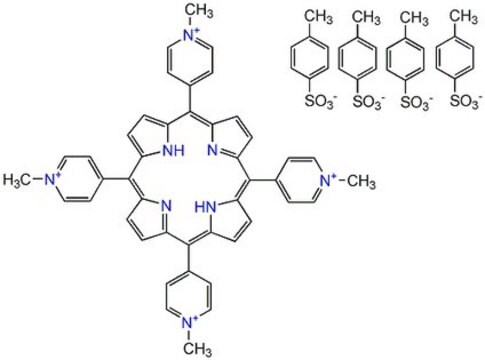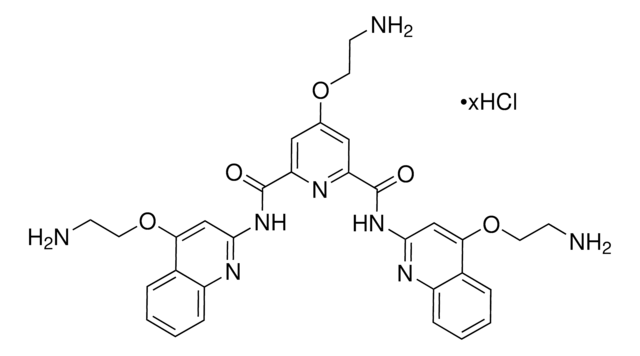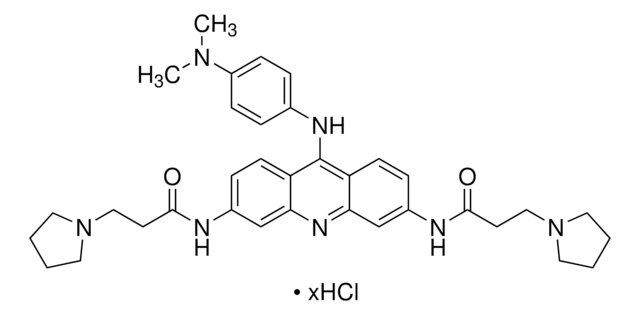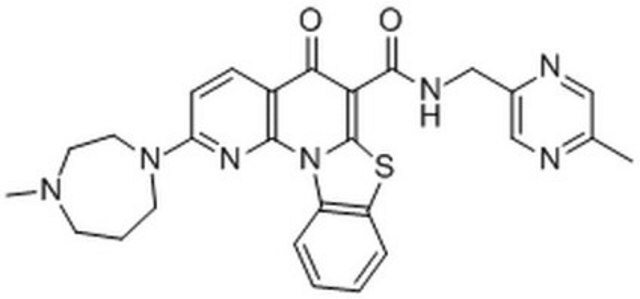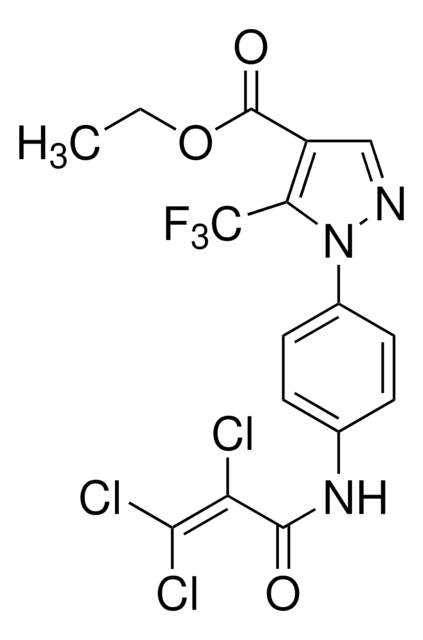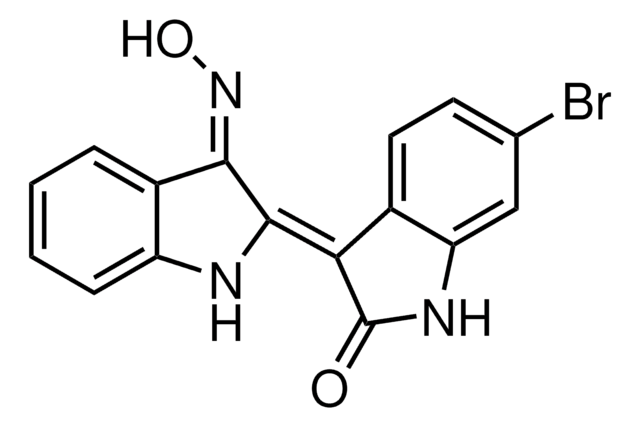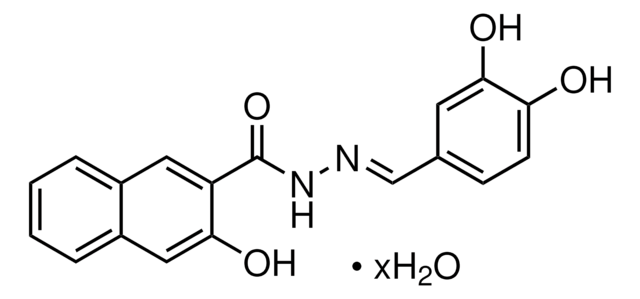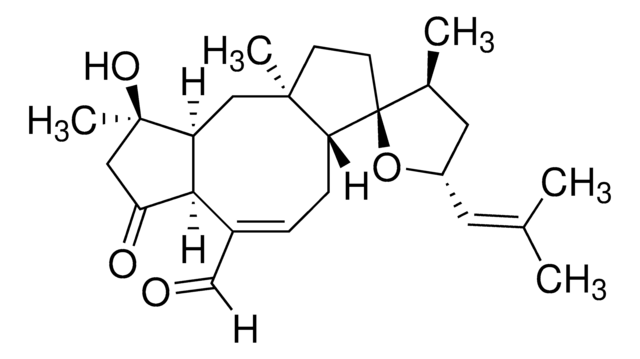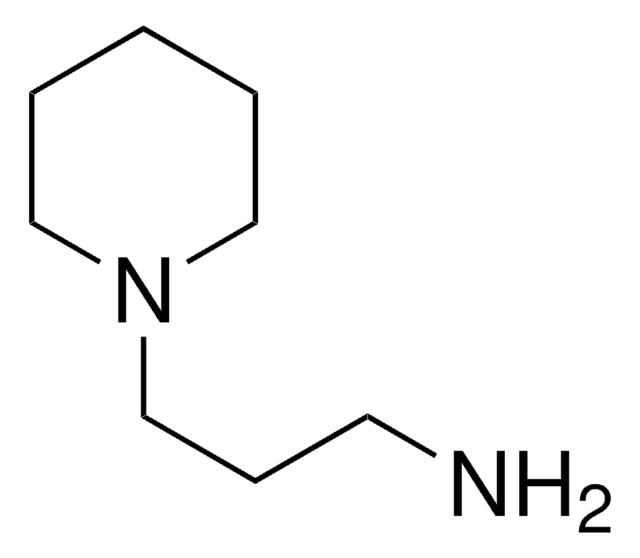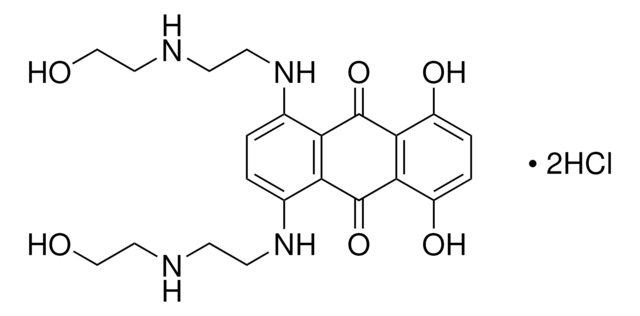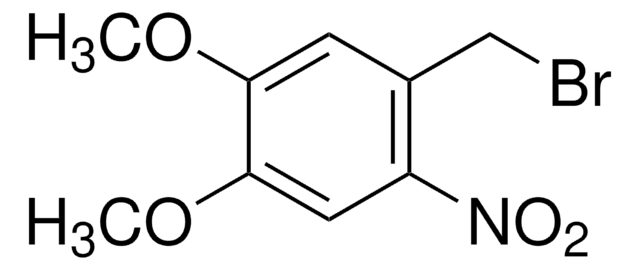SML2298
PhenDC3
≥97% (HPLC), powder, G-quadruplex ligand
Synonym(e):
3,3′-[1,10-Phenanthroline-2,9-diylbis(carbonylimino)]bis[1-methylquinolinium] 1,1,1-trifluoromethanesulfonate (1:2), Phen DC3, Phen-DC(3), Phen-DC3
About This Item
Empfohlene Produkte
product name
PhenDC3, ≥97% (HPLC)
Assay
≥97% (HPLC)
Form
powder
Farbe
white to beige
Löslichkeit
DMSO: 2 mg/mL, clear
Lagertemp.
2-8°C
SMILES String
O=C(NC1=CC2=CC=CC=C2[N+](C)=C1)C3=CC=C4C=CC5=CC=C(N=C5C4=N3)C(NC6=CC7=CC=CC=C7[N+](C)=C6)=O.O=S([O-])(C(F)(F)F)=O.O=S([O-])(C(F)(F)F)=O
Anwendung
- as a quadruplex (G4) ligand to study its effects on the binding of RNA quadruplex (rG4) to nucleolin (NCL)
- as a DNA/RNA G-quadruplexes (GQs) ligand to study its effects on the expression of double homeobox 4 (DUX4) gene
- as a G4 ligand to study its stability and selectivity towards pre-miR-92b rG4 complex and duplex DNA by fluorescence resonance energy transfer (FRET)-melting assay
Biochem./physiol. Wirkung
Lagerklassenschlüssel
11 - Combustible Solids
WGK
WGK 3
Flammpunkt (°F)
Not applicable
Flammpunkt (°C)
Not applicable
Analysenzertifikate (COA)
Suchen Sie nach Analysenzertifikate (COA), indem Sie die Lot-/Chargennummer des Produkts eingeben. Lot- und Chargennummern sind auf dem Produktetikett hinter den Wörtern ‘Lot’ oder ‘Batch’ (Lot oder Charge) zu finden.
Besitzen Sie dieses Produkt bereits?
In der Dokumentenbibliothek finden Sie die Dokumentation zu den Produkten, die Sie kürzlich erworben haben.
Kunden haben sich ebenfalls angesehen
Unser Team von Wissenschaftlern verfügt über Erfahrung in allen Forschungsbereichen einschließlich Life Science, Materialwissenschaften, chemischer Synthese, Chromatographie, Analytik und vielen mehr..
Setzen Sie sich mit dem technischen Dienst in Verbindung.